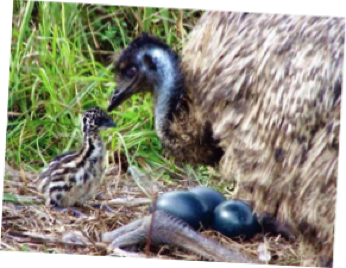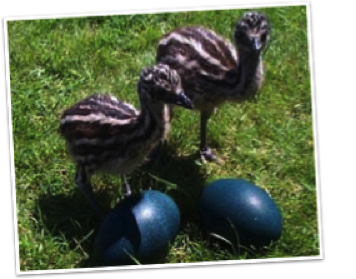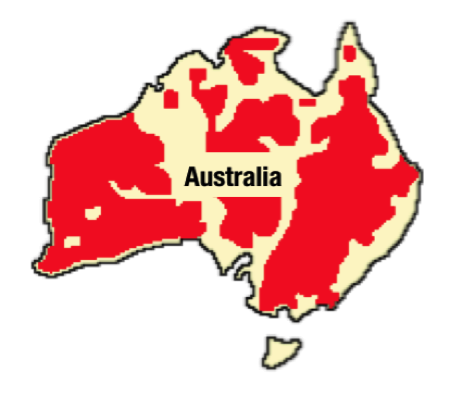









Fast Facts
Name: Emu
Scientific: Dromaius novaehollandiae
Family: Dromadiidae
Relatives: Ostrich, Rhea, Cassowary
Environment: Grassland, Semi-Desert
Origin: Australia
Life-span: 20 years
Size: 60 - 100 lbs

Emus are the largest of the Australian ratites. They are the world’s second largest bird, next to their African cousin, the ostrich. When fully grown, the flightless bird can stand over 6 feet tall at the top of their head. Emus may be found all over Australia, but prefer to stay in open areas where food and water resources are most available.
Female emus lay large, green flecked eggs that can weigh up to 1.7 pounds, sometimes as many as 8 eggs in a nest. Male emus are mainly responsible for incubating the eggs and raising the young after hatching. Emu eggs take about 50 days to hatch. After hatching, the males teach the young how to survive.


Snapshot
1. Emu are on the Australian coat of arms, on
coinage, and in mythology.
2. Several places in Australia are named for the emu.
3. Emu can run 45 miles per hour.

Some people believe the oil from the emu has positive health benefits, especially for joint and muscle pain.
About Me
Emus have varying shades of soft brown feathers on their body. The skin on their head and throat is a blue-green color with small black feathers covering it. Each emu’s coloring differs slightly by region to help camouflage them in their environment. Their plumage structure protects the emu’s body from direct sun exposure to allow for midday foraging. Emus are nomadic in nature. They roam a large area to forage for a variety of vegetation as well as insects. Like other birds, emus must ingest small stones to assist in the digestion of the food they consume. However, they are able to drink infrequently and go for weeks without food. When it is available, they enjoy sitting in water and even swimming. Emu are extremely curious, using their beaks to peck at things to look for food, or to understand their environment. They have even been said to follow and watch other animals and humans.
Emus are part of a group including the ostrich, rhea, cassowary, and kiwi, all winged but flightless bird called ratites. Ratites have proportionally long necks, rounded bodies, and long legs. Though ratites cannot fly, their long legs allow them to move quickly and often over great distances. Emus can easily run and maintain speeds over 45 mph. At this rate, they take strides nearly 9 feet long. They have extremely keen hearing and eyesight which aids in alerting them to predators, and their speed assists with escape and survival.
Meat
Emus have long been used by the indigenous people of Australian for food and fuel. Since the 1990s, emus have been raised for their meat, oil, and leather in Australia and in the United States. Emu is a lean meat and is a dark meat similar to that of other poultry. However the USDA classifies it as a red meat because of its coloring. All the emus used for commercial production are raised in captivity for that purpose, and are kept in large areas to allow for adequate stimulation through movement and digestion. In nearly all of the Australian states there are laws protecting wild emus. It is estimated there are about 1 million emu being raised outside of Australia largely in the United States, China, and Peru.
Products
• Leather (distinct raised pattern from the feather follicles)
• Eggs for decorative arts
• Feathers for dusters and decorations
• Feathers and eggs for ceremonial purposes
Oil
Emus are also widely known for their oil. It is rendered from the emu’s fat. Some people believe emu oil has positive health benefits especially on joint and muscle pain. As of yet, these claims have not been scientifically verified. Indigenous Australians and early settlers were the first to report their use of the oil for its healing properties. The oil possesses high levels of fatty acids including palmitic acid, linoleic, and oleic acid. Currently it is used in various therapeutic products, cosmetics, and dietary supplements. It is a penetrating oil and easily absorbs into skin.


